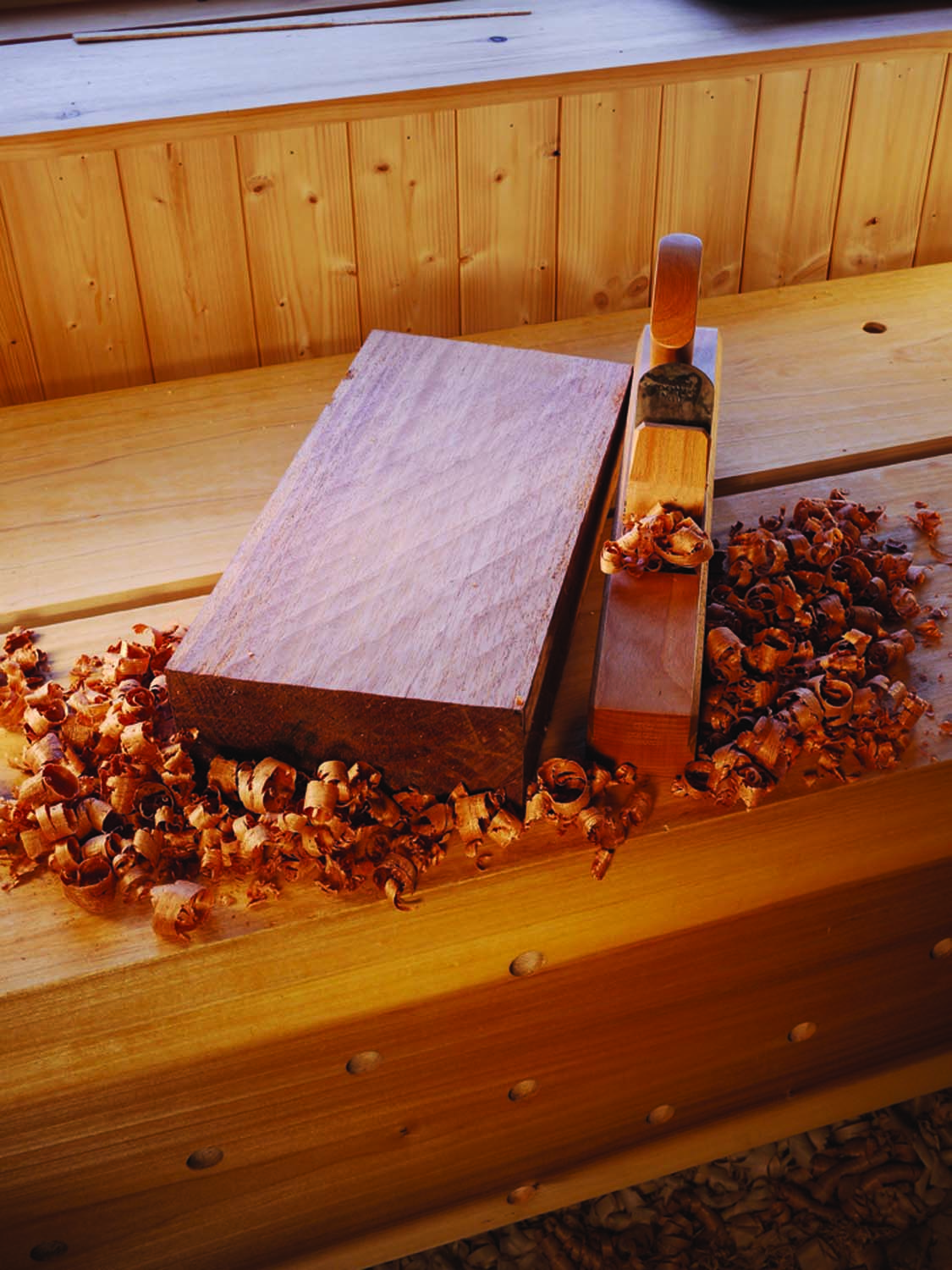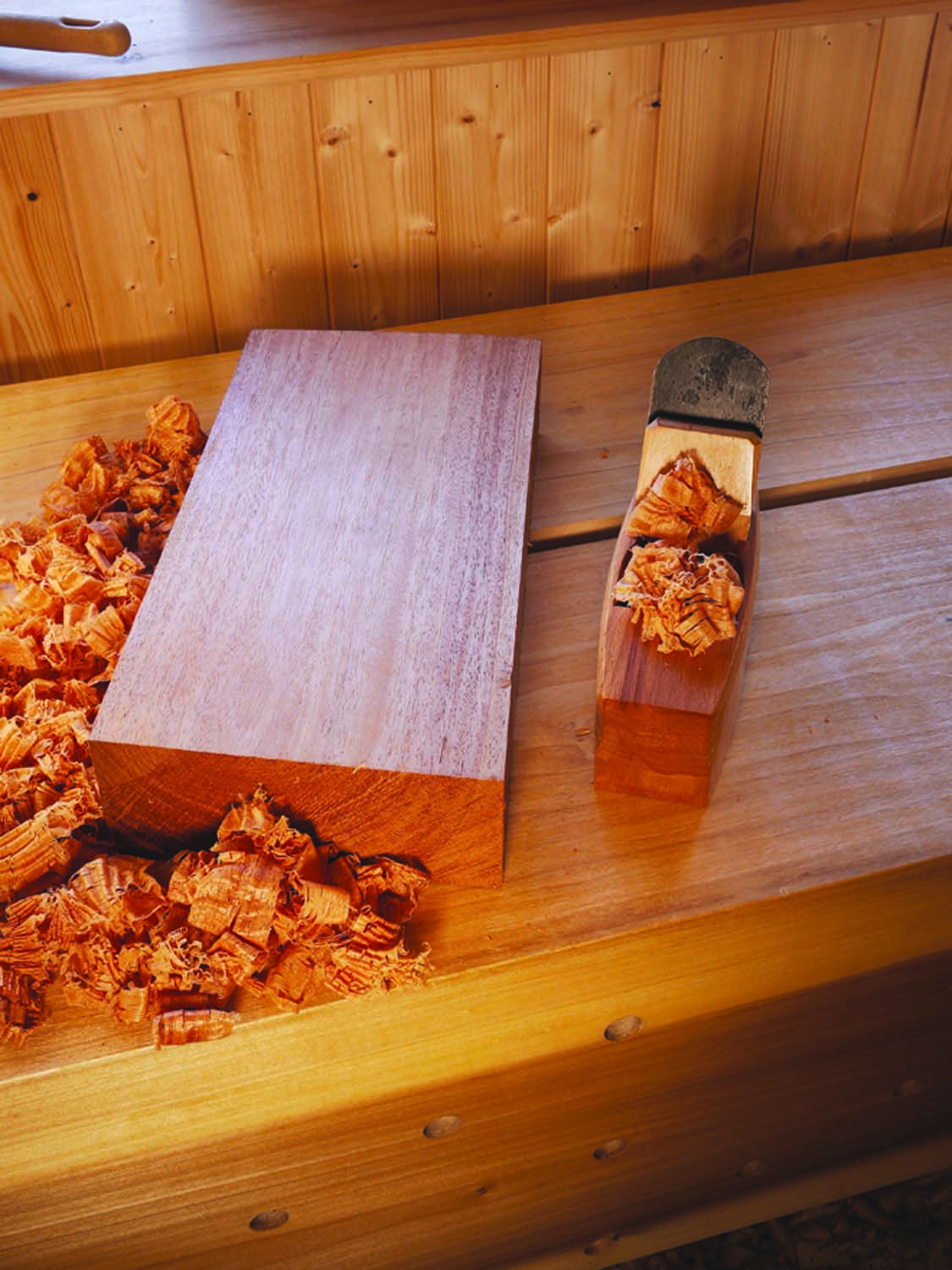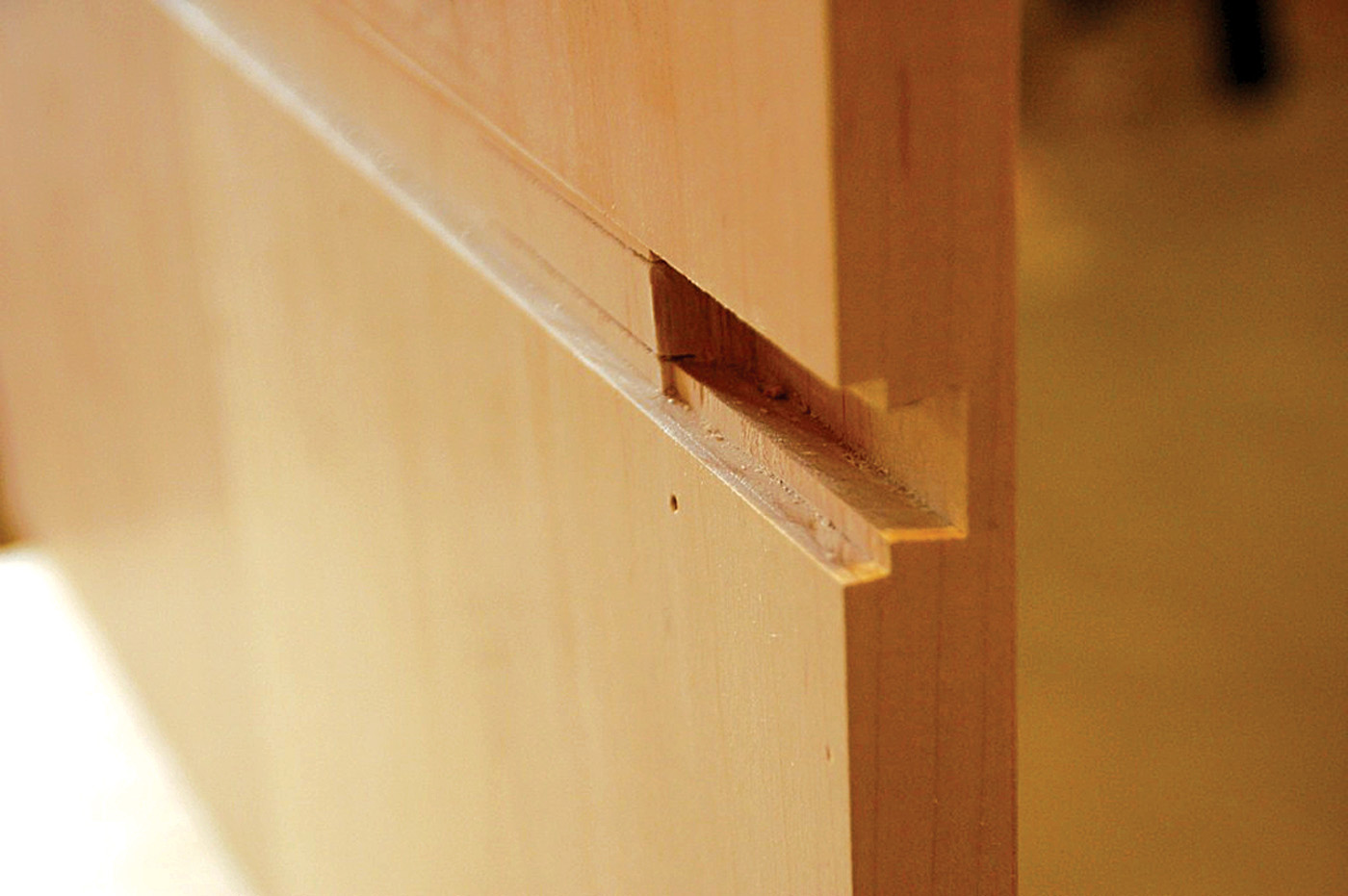We may receive a commission when you use our affiliate links. However, this does not impact our recommendations.
 To understand, you must do.
To understand, you must do.
Working by hand is a viable way for hobbyists to create beautiful furniture, yet it is often seen as slow, odd and antiquated. I choose to work by hand because I enjoy the process and the adventure of learning.
Learning traditional hand-tool work by reading books, blogs and message boards is a challenge. The difficulty lies in having both too little and too much information. Information without context, or viewed in the wrong context, is not helpful and may even be misleading. Art historians rely on historical context to understand works of art, and learning traditional hand-tool skills is no different. Books, blogs and message boards need to be placed within a context and read with a wary eye and thoughtful mind.

Just because. Shop practices, such as the way glue blocks were installed behind bracket feet (here at at top of article), can help us identify the maker. Why did different shops have different practices? Because the Master said so.
Writers are faced with a difficult task: to communicate using only words what is best understood by seeing and doing. This is like describing how an apple tastes; until you bite into an apple, no amount of words will convey its taste. Writers use precise quantitative descriptions, with the risk the reader will treat these descriptions as absolutes. Grinding angles, honing angles, plane blade camber radii and dovetail slopes have all been described using exact numbers. Joseph Moxon (in the 1678 book “Mechanick Exercises”) describes shavings as thick as an old groat, a descriptive term; this has led to people measuring their shavings and old groats! These numbers, without context, are not meaningful; they simply attempt to transfer an idea.
Leonard Lee did the best job of describing honing angles on chisels when he wrote, “Keep the included angle (bevel angle) of the chisel as low as possible consistent with edge retention.” I use similar terms when I describe shaving thickness: “Take the thickest possible shaving consistent with resultant surface quality and expended effort.”
Too Much, Yet Not Enough

No micrometer needed. The period apprentice would be exposed daily to the tools of his trade, including the fore, try and smooth planes. He would have no need to measure the thickness of a shaving; he knew what they should look like.

 There is much written about singular slices of shop practice, and very little of a codified whole. Take bench planes as an example.
There is much written about singular slices of shop practice, and very little of a codified whole. Take bench planes as an example.
There is far more written about the plane I use the least than the planes I use the most.
“The Smoothing plane … must have its iron set very fine, because its office is to smoothen the work from those irregularities the fore-plane made,” wrote Joseph Moxon, in “Mechanick Exercises.”
Contrast those 25 words to the gallons of ink spilled about the smoothing plane in modern woodworking literature. In the modern context, the smoothing plane is used in shops that use power tools to do stock prep; it may be the user’s only bench plane. But in a hand-shop context, by the time you get to the smoothing plane you need no more information than Moxon offers. The use, tuning and setting are obvious following the work you’ve done with the fore plane and try plane.

No micrometer needed. The period apprentice would be exposed daily to the tools of his trade, including the fore, try and smooth planes. He would have no need to measure the thickness of a shaving; he knew what they should look like.

 Each shop has its own set of shop practices. There isn’t necessarily a right and wrong, rather just different ways of doing each thing. For example, when building a case piece with drawers, one task is to build and install drawer blades (horizontal case dividers, sometimes called drawer dividers). Looking at period pieces reveals many construction methods. Which should you choose? Why?
Each shop has its own set of shop practices. There isn’t necessarily a right and wrong, rather just different ways of doing each thing. For example, when building a case piece with drawers, one task is to build and install drawer blades (horizontal case dividers, sometimes called drawer dividers). Looking at period pieces reveals many construction methods. Which should you choose? Why?

Drawer blades. A dovetail fits neatly in a dovetail socket to divide one drawer from the next. But there are many methods of achieving this joint using hand tools. Do as your “master” teaches you.

To paraphrase Bill Pavlak, sometimes the answer to “Why?” is simply, “Because”. Because that was the way of the shop. There isn’t a right or wrong answer. Apprentices, immersed in the practices of the working shop, would not have had to choose from several methods; they would have been shown the way. These shop practices allow us to identify where a piece was built, and sometimes even the exact shop it came from.
Shop practices provide a context for learning. Watch someone, and really observe. The sights and sounds in a working shop teach more than any book. The sound of a sharp plane, the smooth rhythm of a good sawyer and even the sound of a worker chopping a mortise is easy to hear and to see, but difficult to describe in words alone.
Alone in your shop the best you can do is guess how hard to strike a mortise chisel. Once you hear a sharp plane and its “whisk-whisk” song you’ll immediately know if your planes are sharp. There is no need to measure a shaving once you have seen the shavings from the journeyman’s fore, try and smoothing planes.
Learn of the Skillful
There is little opportunity to observe these things today, outside of Colonial Williamsburg and a handful of other living-history shops.
Take advantage of any opportunity to observe skilled hand-tool craftspeople. Seek out others who work by hand. Find a local chapter of the Society of American Period Furniture Makers, investigate local woodworking clubs and guilds, and keep your eyes and ears open for any demonstrations in your area.
While you observe, try to place things in the larger context. Remember:
18th-century shop practices were driven by economics and local traditions.
Back in your shop, try to expand and unify the individual slices of information you have gathered. Explore and create your own shop practices. While exploring uncharted territories attempting to solve a piece of the puzzle, you may find yourself thinking, “There is no way they did it this way.” More often than not, after further research you’ll find your gut was right. And remember that the answer to “Why?” may be “Because.”
The Arts & Mysteries do not exist in books, blogs or on message boards; they reveal themselves as you work. To understand, you must do. -Dean Jansa
Here are some supplies and tools we find essential in our everyday work around the shop. We may receive a commission from sales referred by our links; however, we have carefully selected these products for their usefulness and quality.



 To understand, you must do.
To understand, you must do.




